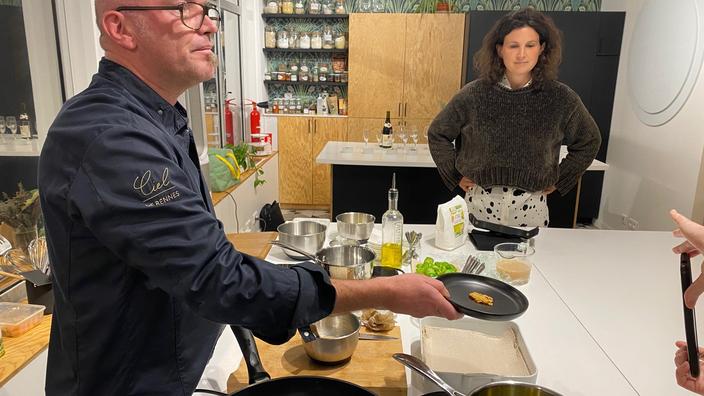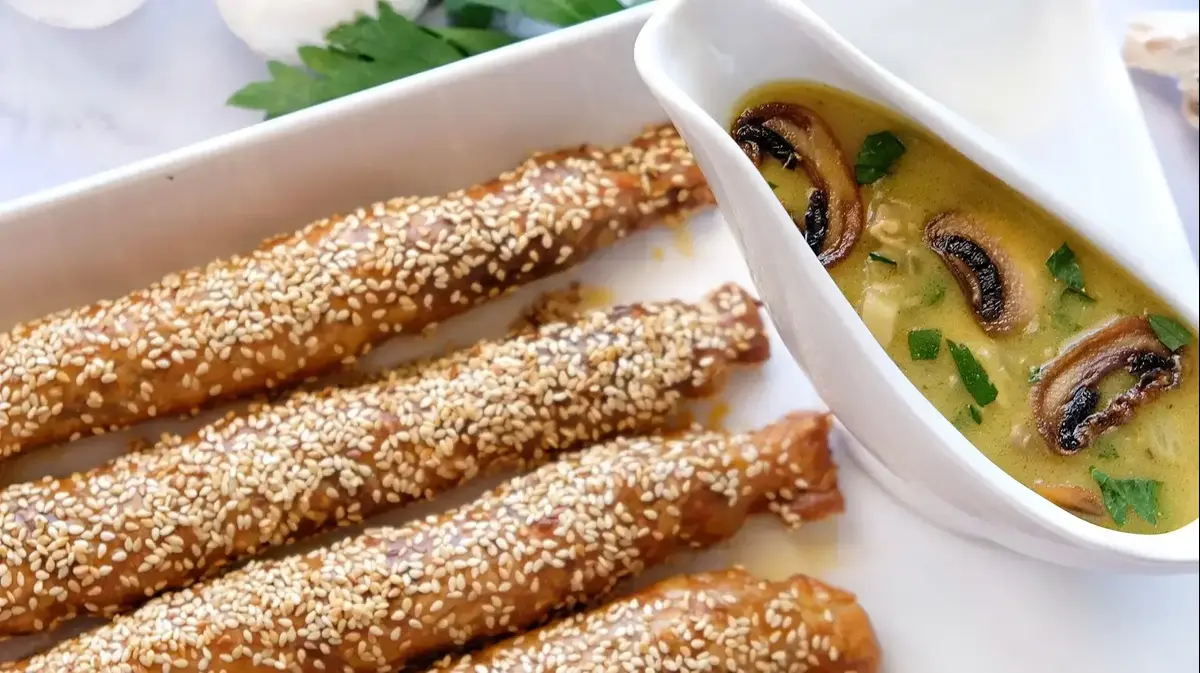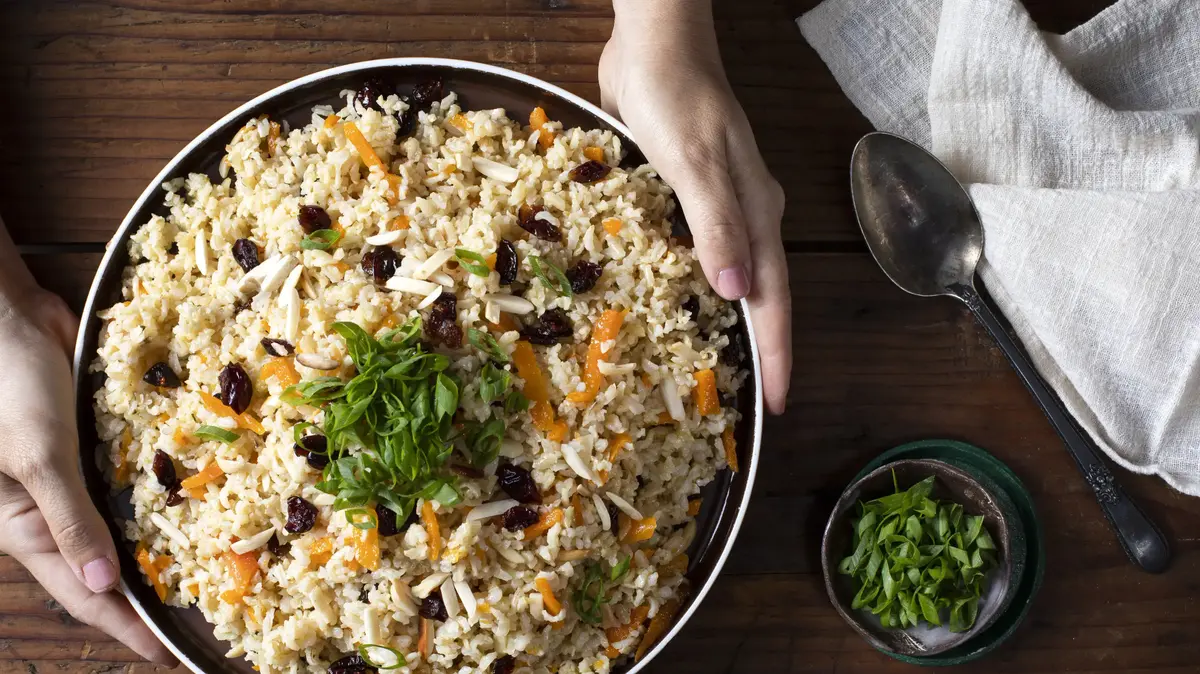Artificial, cultured, synthetic, cultivated, laboratory, in vitro meat ... For the past ten years or so, new scientific techniques have been shaking up the world of food processing. And among these agitators, the French Vital Meat hopes to be the first to revolutionize the plates of Europeans. Like dozens of other start-ups around the world, the young shoot that emerged in 2018 from the Grimaud family group, a specialist in animal genetics, has looked into new ways of making meat.
Not by replacing it with vegetable proteins as the food greats are already doing.
But by replicating in bioreactors, and using nutrients, cell lines from animals.
In this case, a poultry cell line.
"
We start with stem cells extracted once and for all from an animal, which can be reproduced ad infinitum,
" says Frédéric Grimaud, CEO of the group of the same name.
A base for food professionals
Three years after the first steps, this work is bearing fruit. Vital Meat does not offer its products in the form of chicken thighs or ready-to-eat nuggets, as some start-ups have been able to do with ground steaks. "
For the moment, arriving at this type of structured product seems technically and financially too expensive
", details Étienne Duthoit, the founder and general manager of Vital Meat. The product is in the form of a white and cloudy liquid, which the young company, once the authorizations have been obtained, wishes to sell to the food industry or to chefs. It is then up to them to make their own recipes.
An exercise that chef Jean-Marie Baudic recently tried.
Among the
happy few
, the Figaro was able to try this experience of a new kind.
An unprecedented exercise, many of these cellular meat start-ups having neither the volumes, nor the finances, nor the sufficient authorizations for mass tastings.
Two recipes have been designed for the occasion.
The taste, unequivocal
The first, and the simplest, is to cook part of this curious mixture in a pan, simply garnished with a little grapeseed oil.
Baked on one side, then the other, it quickly turns into a small, toasted-look patty.
When tasting, there is no doubt that the chicken taste is there.
More precisely a taste of grilled chicken skin, which, unlike vegetable ersatz, stays in the mouth for a long time.
Simply cooked in a pan for a few minutes, the preparation resulting from Vital Meat's bioreactors transforms into a crispy pancake with a pronounced taste of grilled chicken.
Olivia detroyat
Second recipe (a little) more elaborate: an appetizer made from fake chicken. The former Michelin-starred chef mixes the preparation with starch and then corn flour. Objective: to give it a little more consistency. Immersed in hot oil, the compact mixture comes out after a few minutes, completely fried. With the appearance of a small nugget or a croquette with a melting heart. When tasting, we always find the same taste of grilled chicken, however less pronounced. Embellished with carrots, onions and a few pan-fried cauliflower leaves, the recipe is once again a perfect illusion. Enough to leave room for the imagination for other variations: chicken sandwiches, revisited Caesar salad, chicken broth ... All without killing animals.
Mixed with cornstarch and corn flour and immersed in boiling oil, the fake chicken preparation becomes a chicken-flavored croquette.
Served here as an appetizer.
Olivia detroyat
Fried, the preparation can also take on the air of real-fake nuggets.
Vital Meat
Multiple brakes to be lifted
The “
animal-free
” manufacturing process
is indeed Vital Meat's main argument.
Enough to allow the future 10 billion humans to continue to eat meat with the taste they like, but without destroying the planet and without causing animal suffering.
An approach that makes some breeders or meat purists jump.
“
We refute the theory of the great replacement
, assures Étienne Duthoit.
We will be complementary with the agricultural world. It will continue to prosper, but it will not be able to meet the demand for meat on its own, which will grow by 50% in the next 30. Where some raise animals, we will also raise cells ”.
The ambitions of the group, discreet about its financial objectives, are clear: to take its place in a meat market set to grow by 450 million tonnes by 2050.
Frédéric Grimaud, CEO of the Vital Meat shareholder group, and Étienne Duthoit, creator of the start-up, surround the chef Jean Marie Baudic.
More than a structured product, Vital Meat relies on an “ingredient base”, which chefs and agro-industrialists will use in their recipes.
Vital Meat
If the Vital Meat seems the most advanced from a technological point of view, several brakes remain to be lifted.
Regulatory first, with the obligation to obtain a European green light before filling the plates.
The European health authorities thus drastically control, via the Novel Food regulations of 2018, all new ways of eating: algae, insects, cultivated meat.
This process could take at least 18 months.
By then, Vital Meat intends to raise several tens of millions of euros to move to the industrial stage, where the start-up only has a pilot site near Cholet, with a production capacity of 2,000 liters. This level remains insufficient to serve all its potential customers, and above all to achieve a reasonable production cost, even if this has already been divided by 20 since its creation in 2018.
Last but not least, Vital Meat will have to convince consumers who, depending on the country, have a taste for novelty more or less pronounced. His native country could prove to be the most difficult to convince. At least initially. “
It is clear that French consumers are not going to rush overnight to cultivated meat. But the appetite for a healthier manufacturing method, without impact on agricultural land, without pesticides and better in terms of greenhouse gas emissions, should allow our approach to gain a place
”, supports Étienne. Duthoit.
In other countries such as the Netherlands, the United States or Singapore, the acceptability of these new production methods seems more advanced.
On condition of obtaining the authorizations in time and not being overtaken.
"
If it takes too long in Europe,
we will start first in Singapore or the United States, where the brakes are less numerous" concludes the manager.
Objective, to arrive on the plates by 2023.








